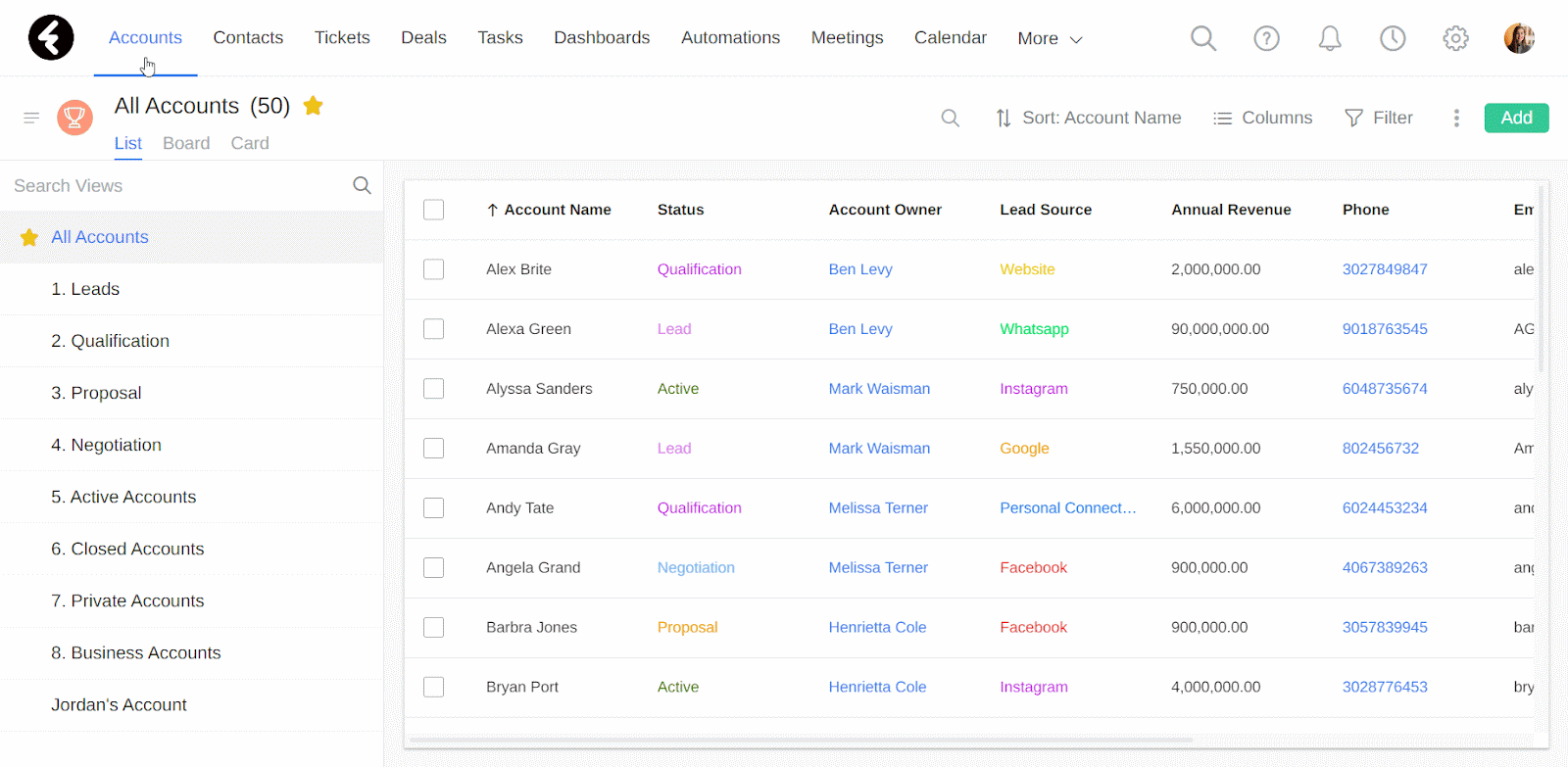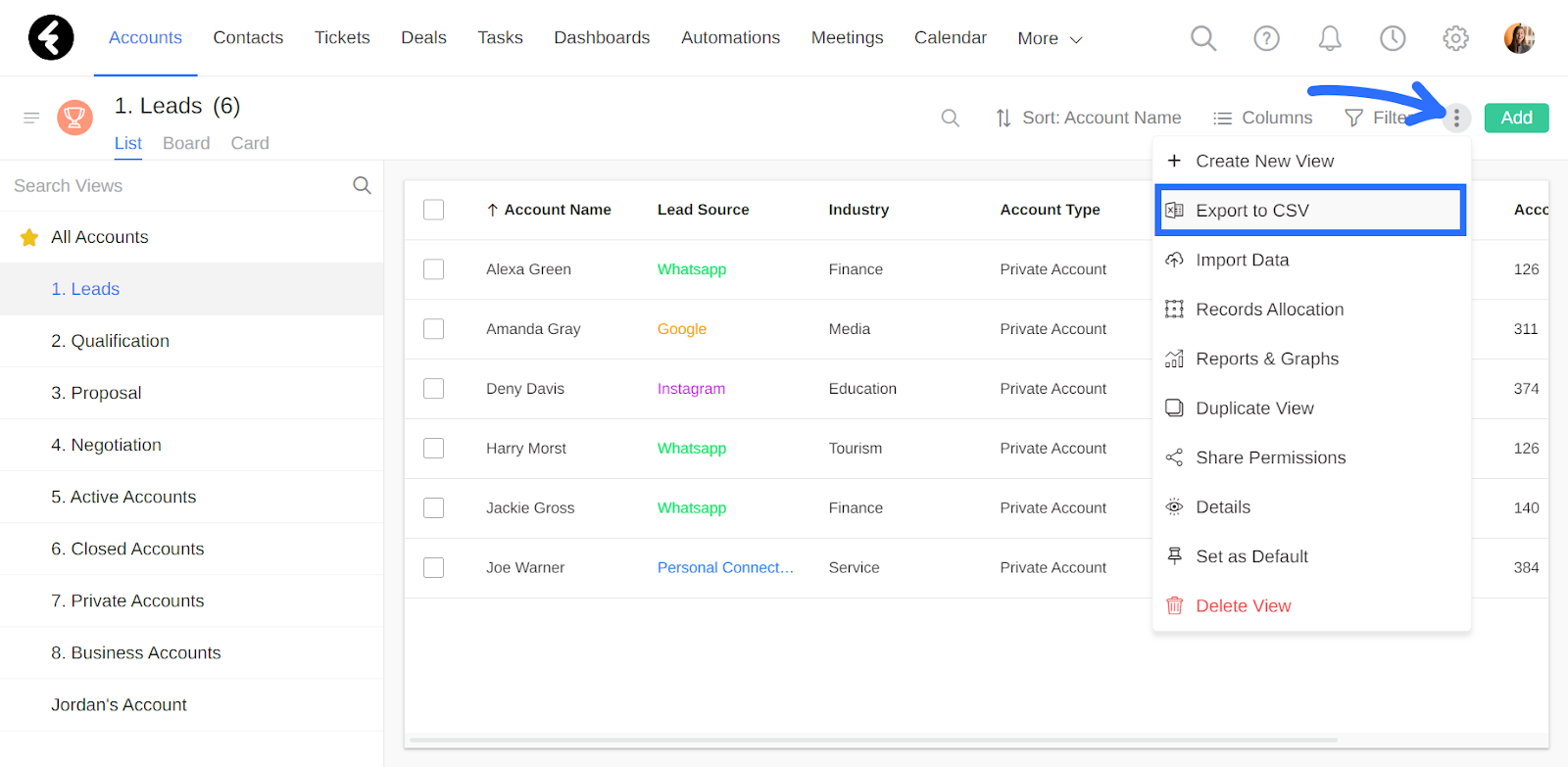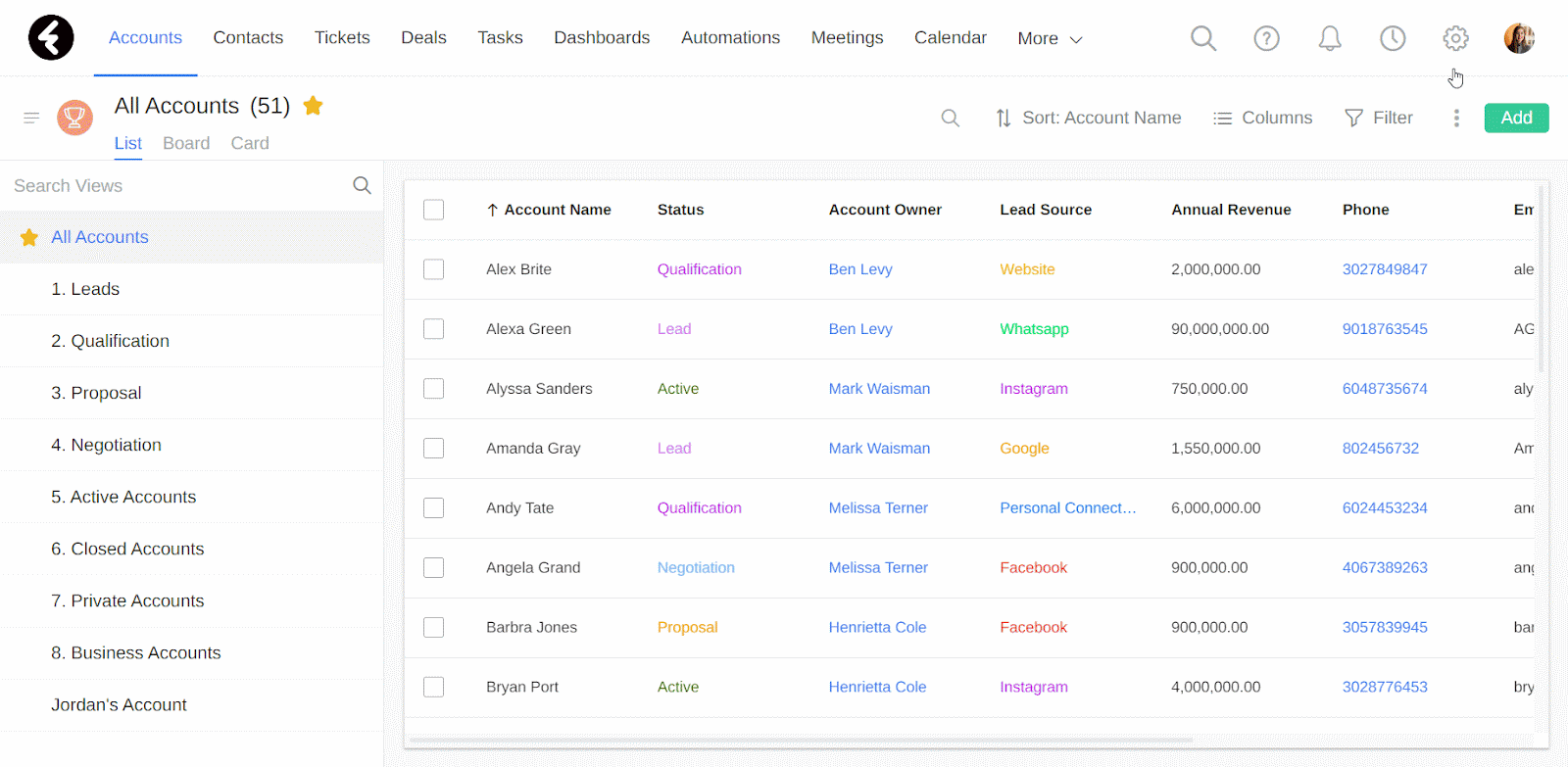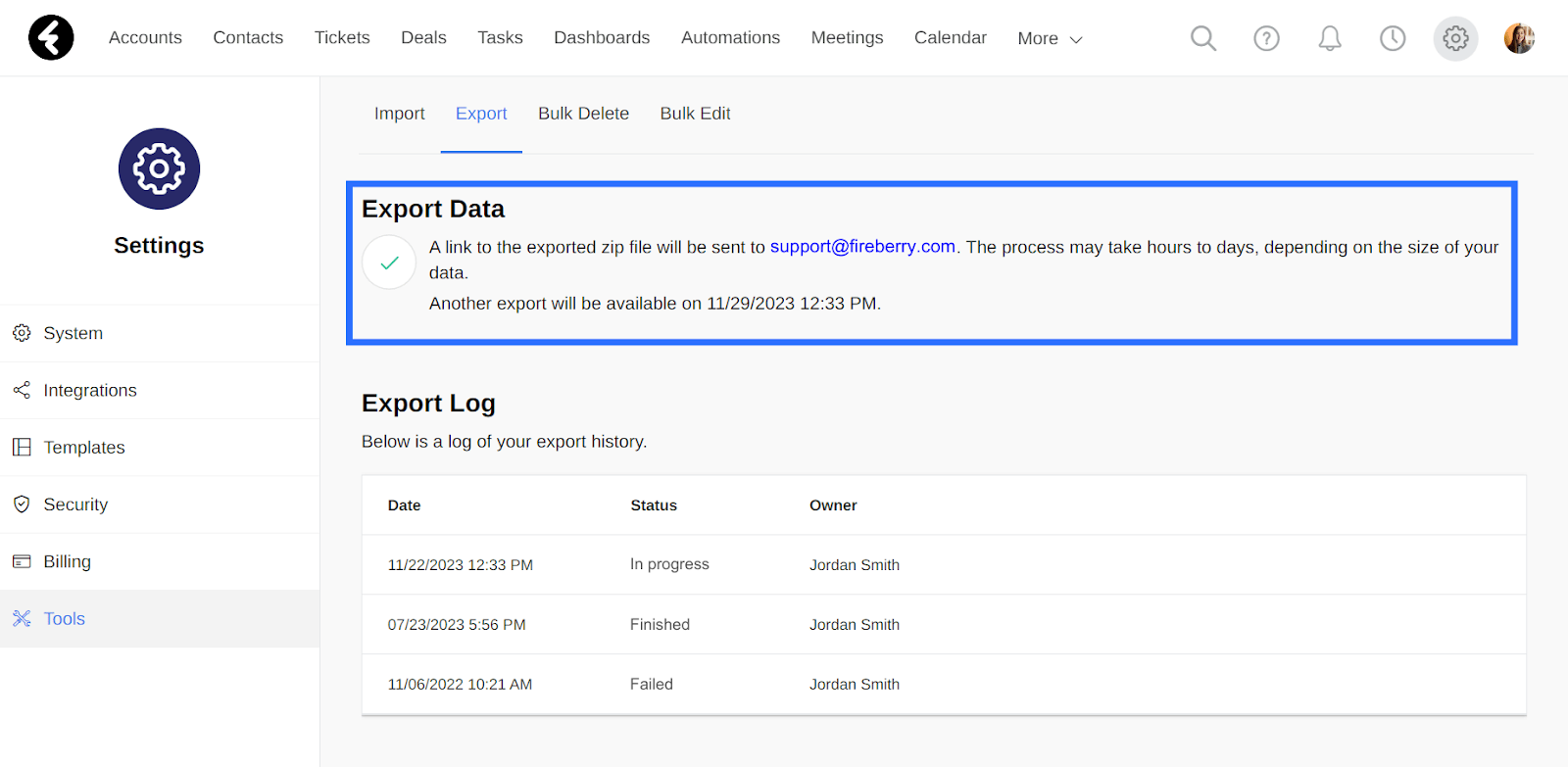Exporting data
You can easily export data from the system in a few simple steps. You can choose to export a single view, or you can export all the data in the system to create a backup and increase security.
Export a single view
You can use the system to export and download a single view as a CSV file. This is useful when you need to export only a single object or view. For example, an educational institute may want to print out an attendance list of all the students in a specific class.
In order to export a view, start by using the top bar menu to open the object the view is in. Then select the view you’d like to export from the list of views on the left. The fields you set as columns in the view will be the columns in your exported CSV. Make sure to include any fields you’d like to export as columns. You can add up to 20 columns to your view. The exported file will use the name of the view and include the exact records which are included in the view. They will use the same appearance and settings as the view, including the order of the columns, sorting settings, and more.

Once your view is set up, click the three dot menu on the top right of the view. Then click the Export to CSV option. This will download the selected view onto your computer.

Export all your data
You can choose to export all the information in the system. You will receive a CSV file containing all the objects in the system along with all the attached documents and files. To export your data from the system, click on the settings icon in the top right corner of the page, select the Tools tab on the left, and then choose Export from the top bar. This will open the Export Data page. Under the Export Data heading, you’ll find a checkbox which gives you the option to include any attached files and documents in your exported data. This may slow down the export process. Click the checkbox to mark it and include your documents, or click it again to remove the check and exclude them. Click the Export button to begin the export process.

Once you click the export button, an email will be sent to the primary user with a link to access the exported data. After 7 days, the link will expire and you’ll need to restart the export process. The email address of the primary user will be displayed under the Export Data heading, along with the next date and time when you can export data, which will be seven days after the original export.

In the email, you’ll see a button which you can click to download a ZIP folder. This folder will contain a CSV file for each object in your system. Within the files, you’ll find a row for each system record belonging to the object. If you’ve chosen to include your attached documents, they will be attached in a separate folder.
Export a single view for a list of data you need in CSV format, or export all the data in your system to keep a backup of your data.
Course Lessons
Up next
